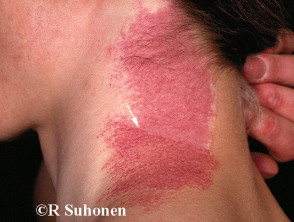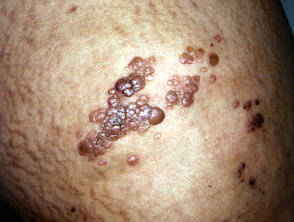What is Cobb syndrome?
Cobb syndrome is a genetic disorder characterised by vascular lesions and neurological deficits. It is also known as spinal arteriovenous metameric syndrome (SAMS) and cutaneous meningospinal angiomatosis.
While first described by Berenbauch in 1890, the syndrome is most closely associated with Dr Cobb’s description of a clinical case in 1915.
Who gets Cobb syndrome?
Cobb syndrome is extremely rare.
- There are fewer than 100 reported cases in literature, although researchers believe that the disease may be underreported.
- Reported cases show Cobb syndrome to be slightly more common in males and Caucasians.
- The cutaneous symptoms of Cobb syndrome appear at birth, and neurological symptoms present by the age of 5 years.
- Affected children do not have a family history of Cobb syndrome.
What causes Cobb syndrome?
The cause of Cobb syndrome is not completely understood. It is believed that somatic mutations in the neural crest or mesoderm are responsible for its development fairly early in the development of the embryo.
What are the clinical signs of Cobb syndrome?
Cobb syndrome presents with multiple vascular lesions:
- Capillary vascular malformations (port wine stains) in a dermatomal distribution on the trunk
- Arteriovenous malformations
- Other vascular lesions, including angioma, angiokeratoma, angiolipoma, cavernous haemangioma, and lymphatic malformation.
Signs of neurological involvement include:
- Hyperreflexia (overactivity of physiological reflexes), and sensory and motor defects, including paralysis
- Morphological (structural) abnormalities of the central nervous system.
If neurological symptoms do occur, they can happen in intermittent episodes, gradual progression, or with sudden onset.
Structural abnormalities of the urinary tract are also reported.
Vascular malformations
What are the complications of Cobb syndrome?
Possible complications of Cobb syndrome include:
- Combined kyphosis and scoliosis, bone and joint pain due to spinal involvement
- Thrombosis within arteriovenous malformations
- Necrotic myelopathy and Foix–Alajouanine syndrome
- More rarely, congestive heart failure, and gangrene.
How is Cobb syndrome diagnosed?
Cobb syndrome is diagnosed by the presence of multiple cutaneous vascular lesions and neurological defects. Spinal vascular lesions associated with Cobb syndrome can be diagnosed by MRI, although CT scans, radiography, or angiography can also be used for detection.
How is Cobb syndrome treated?
Treatment for Cobb syndrome may include:
- Sclerotherapy, endovascular embolisation and surgical excision of vascular lesions
- Oral steroids
- Physical therapy
- Compression garments for capillary, venous or lymphatic abnormalities.
What is the outlook for Cobb syndrome?
The outlook for children with Cobb syndrome is dependent upon:
- The severity of spinal and neurological involvement
- Early detection and intervention to prevent or minimise neurological symptoms.

